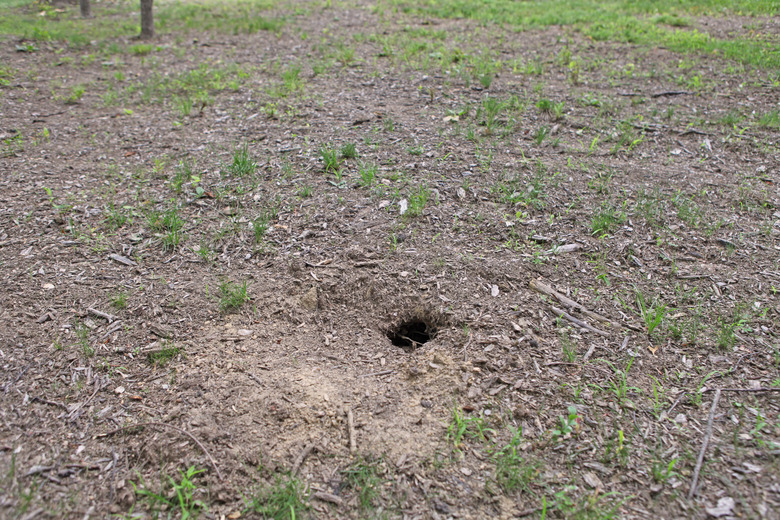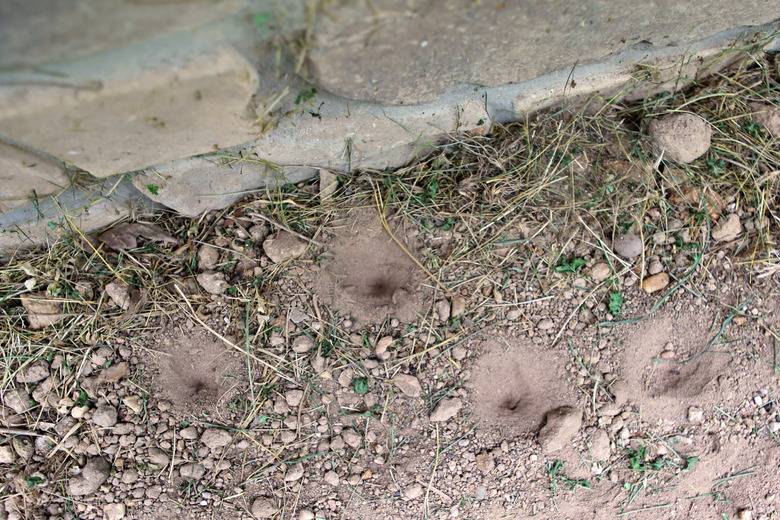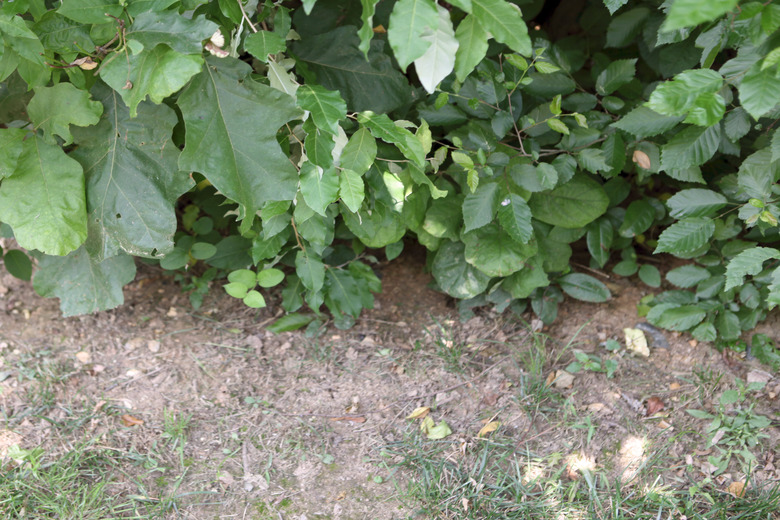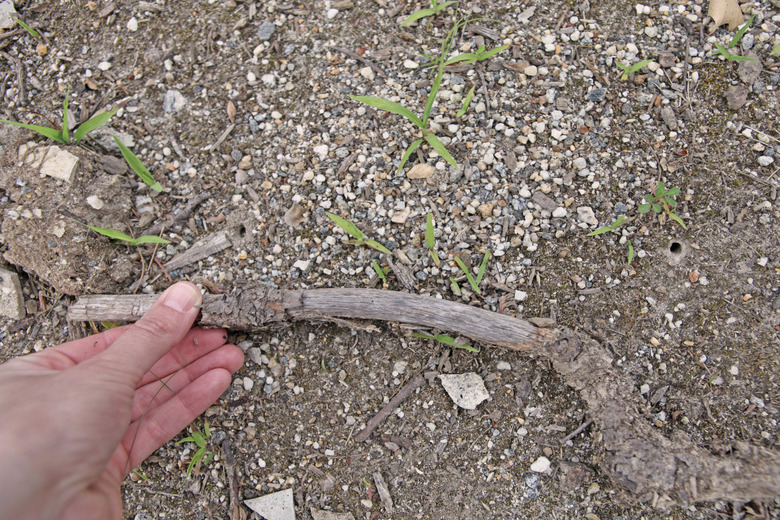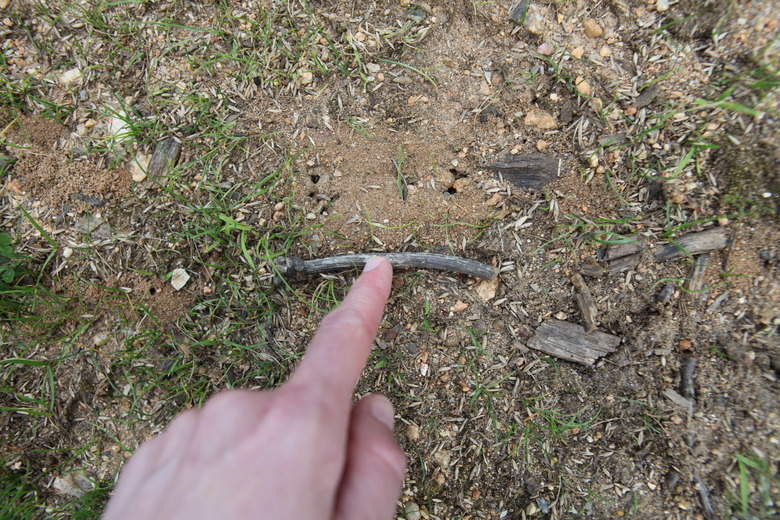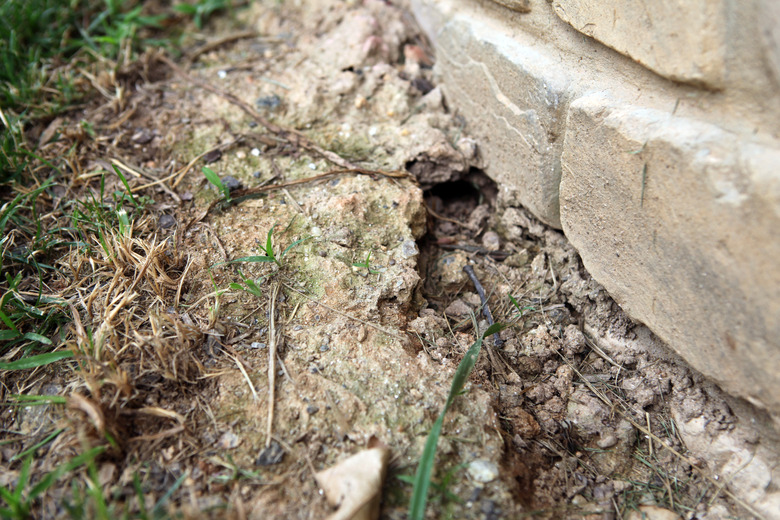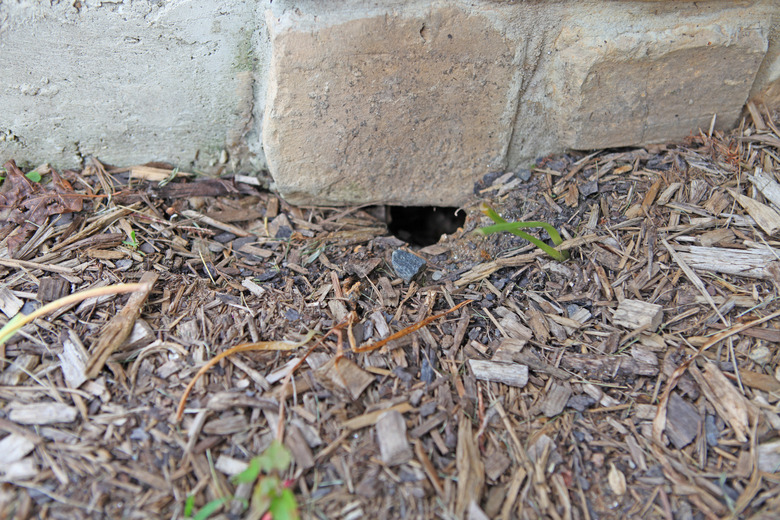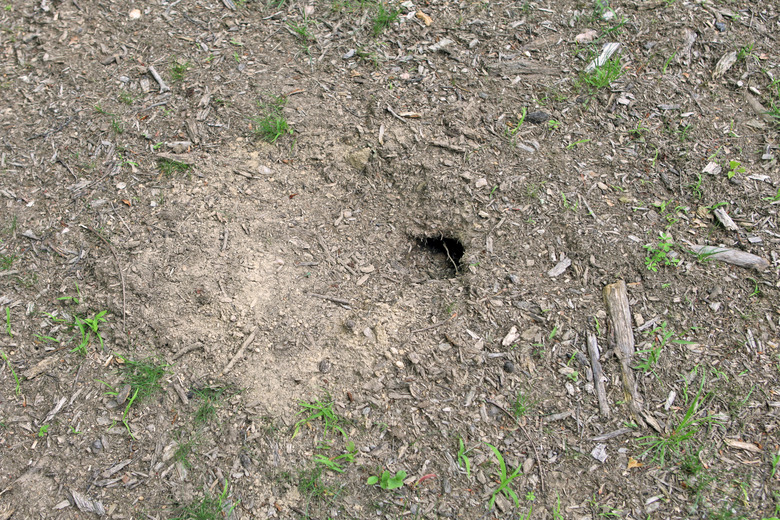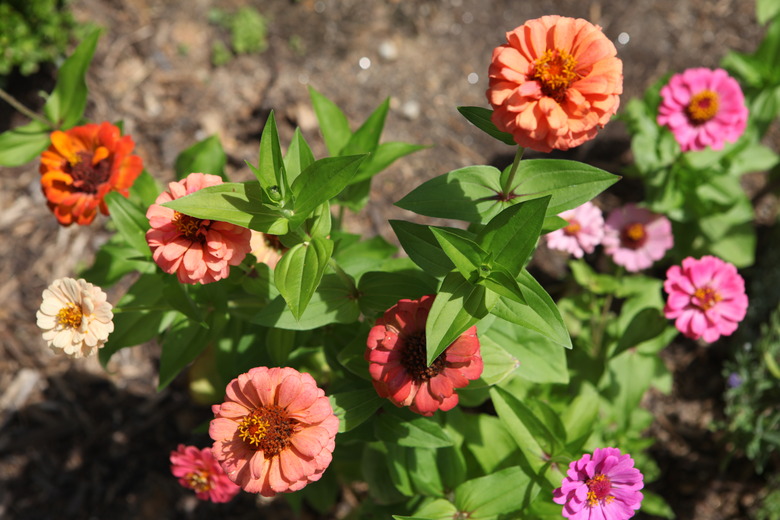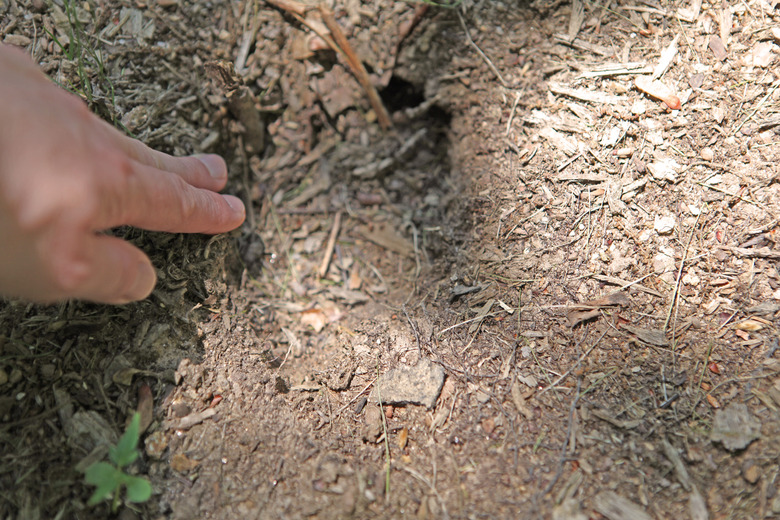How To Diagnose A Hole In The Lawn
Holes in and around the lawn can be as diverse in size and shape as the causes behind them. A hole can be a sign of birds or animals feeding, a rodent or pest problem, or a minor-to-serious underground hazard ranging from a decomposed stump to a full-blown sinkhole. Determining the cause of the hole will lead you to possible solutions for correcting problems including eliminating walking hazards and creating a more attractive landscape.
Step 1
Examine the size and shape of the hole. Mounds with holes in the center indicate gophers or moles. Cone-shaped hills with smaller-diameter holes may be caused by night-crawlers or underground insect colonies. If the hill is near a marsh or lake, it may be crayfish.
Step 2
Determine if there are tunnels or trenches connected to the hole. Tunnels indicate underground animals. Trenches near bushes may be caused by rabbits building nests.
Step 3
Look closely at the spacing between holes. Irregularly spaced and shallow holes may be caused by striped skunks or grey squirrels. Small, well-spaced holes can indicate a short-tail shrew or mouse.
Step 4
Observe the markings around the hole. Small, U-shaped holes with lines in the soil indicate wasps that have brought food to the hole to feed their young.
Step 5
Look for loose dirt around the hole. Clean entrances without mounds indicate either ground squirrels or brown rats. If the hole is in a woodpile or near the foundation of a structure, rats are most likely present.
Step 6
Examine the proximity of the hole to structures, woodpiles or other covering. Woodchucks, rats chipmunks and skunks prefer the cover.
Step 7
Look around the open yard for small, dug-out pits, which can be a sign of skunks or raccoons seeking food. Squirrels bury and unbury nuts in the ground. If earthworms are present, birds will make large numbers of pencil-sized holes seeking them out.
Step 8
Look in or around the garden. Holes in the vicinity may indicate ground hogs, rabbits or rodents feeding on vegetables.
Step 9
Test the sides of the hole for compaction if the hole has no dirt around it; this indicates a sinkhole, or a caved-in area. Use caution when diagnosing these types of holes. If the sides of the hole are soft, the possibility of subsidence, or sinking, may be high. Underground trash piles, running water, buried stumps or abandoned wells can cause cavities underground.
Warning
Rope off or post any areas to keep pets, children and others away from areas where a sinkhole may be forming; notify any underground utilities, such as gas or water, that have lines in the area and call your local public works department.
